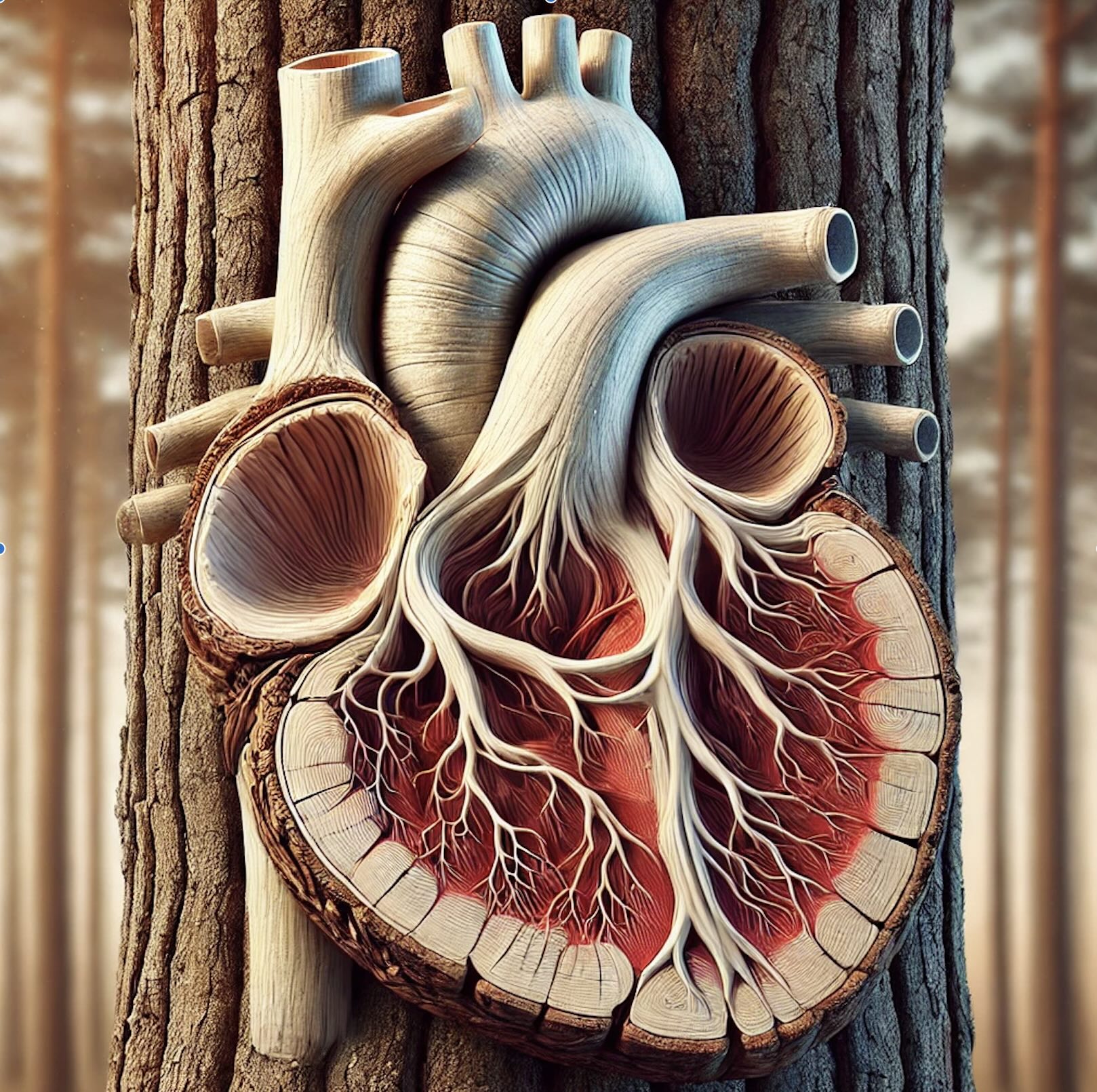The magic 4
If a mouse weight 60 g. and human weight 60.000g. How much more energy human needs? Intuitively, one might expect that a human would consume 1,000 times more energy than a mouse. But surprisingly, this assumption is not correct.
Kleiber’s Law states that an animal’s metabolic rate - the rate at which it burns energy - scales to the 3/4 power of its body mass. So, if a human is 1,000 times heavier than a mouse, it doesn’t need 1,000 times more energy, but rather 1,000 to the power of 3/4 wich is ≈ 178 times.
Interestingly, the number 4 appears in many other scaling relationships in biology. Heart rate, for examle, scales to the power of -1/4,indicating that larger animals have slower heartbeats. The 3/4 power law also appears in relationships like aorta cross-sectional area scaling with body mass. And since tree resembles cardio-vascular system, a tree trunk cross-sectional area also scales with power of 3/4 with a tree size.

In summary, simply by knowing a mammal’s size and applying these “quarter-power” scaling laws, we can predict a remarkable number of its characteristics: the amount of food it needs, its heart rate, time to maturity, aorta size, and much more.
The fact that this single number, 4, underpins so many scaling relationships across diverse species is breathtaking. But why 4? I’m eager to uncover the answer by continue reading Geoffrey West’s “Scale” Will keep you posted.